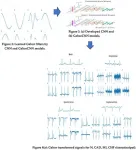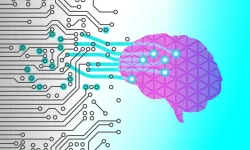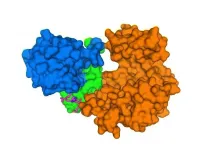(Press-News.org) A team of researchers from Nanyang Technological University, Singapore (NTU Singapore), Ngee Ann Polytechnic, Singapore (NP), and the National Heart Centre Singapore (NHCS) have invented a tool that could speed up the diagnosis of cardiovascular diseases.
Powered by artificial intelligence (AI), their innovation uses electrocardiograms (ECGs) to diagnose coronary artery disease, myocardial infarction and congestive heart failure to an accuracy of more than 98.5 per cent.
The joint development of the diagnostic tool is timely, as the number of deaths caused by cardiovascular disease in Singapore has increased over the past three years. According to the Singapore Heart Foundation, 29.3 per cent of all deaths in Singapore in 2019, or almost 1 out of 3 deaths in Singapore, was due to heart diseases or stroke.
The scientists hope that their innovation could support the diagnosis of cardiovascular diseases in clinical settings, specifically while physicians carry out preliminary ECGs, ultimately leading to speedier courses of treatment.
The researchers devised the diagnostic tool by using an AI machine learning algorithm called Gabor-Convolutional Neural Network (Gabor-CNN), which mimics the structure and function of the human brain, enabling computers to learn from past experiences like a human. Using the algorithm, they trained their tool to recognise patterns in patients' ECGs by inputting examples of ECG signals that reflect cardiovascular diseases.
Clinical Associate Professor Tan Ru San, Senior Consultant at the Department of Cardiology, NHCS, who co-authored the study, said: "Our study on a preliminary small group of subjects has demonstrated promising results in terms of the accuracy of using routine ECGs to classify some common cardiovascular conditions. Although confirming the specific disease still requires additional testing, our diagnostic tool will allow physicians to triage patients more efficiently and to streamline the number and type of downstream confirmatory tests."
Associate Professor Eddie Ng Yin Kwee from NTU's School of Mechanical and Aerospace Engineering, who co-led the study, said: "Scientists and physicians have been exploring AI techniques to aid in disease diagnosis. Our diagnostic tool is the first to use GaborCNN to allow for ECG signals to be directly entered into the system for analysis, and could lead to advancements in the pursuit of merging AI with medical solutions. Our proposed system is equipped to be validated with bigger database and has the potential to aid the clinicians to screen for cardiovascular diseases using ECGs."
Dr U Rajendra Acharya, Senior Faculty Member from Ngee Ann Polytechnic's School of Engineering said: "Our AI diagnostic tool, which was developed using a small public database, can detect coronary artery disease, myocardial infarction and congestive heart failure using ECG signals accurately. It has the potential to aid clinicians in the screening of cardiovascular diseases quickly, speed up the delivery of treatment and reduce costs for patients."
The study was published in the peer-reviewed scientific journal Computers in Biology and Medicine in May.
Using AI to aid in detecting heart disease
To test their diagnostic tool, the researchers obtained ECG signals from both healthy individuals and patients with prevalent cardiovascular diseases.
In a pilot study, the researchers used the tool to analyse ECG signals from 92 healthy individuals, as well as seven patients with coronary artery disease, 148 patients with myocardial infarction and 15 patients with congestive heart failure.
Clin Assoc Prof Tan added: "Our AI-enhanced tool could automatically identify ECG signals associated with healthy people and patients with the different cardiovascular diseases with an accuracy of more than 98.5 per cent. Heart disease is a leading cause of death worldwide, and affects not only the heart but other major parts of the body. Early detection prevents complications such as heart failure, stroke, kidney disease and artery disease."
Elaborating on the role of AI in disease detection, Assoc Prof Ng added: "AI techniques have the potential to radically improve healthcare solutions, especially in data analysis, offering clinicians novel tools to interpret data and make clinical decisions. AI techniques such as machine learning and deep learning can also improve medical knowledge due to the increase of the volume and complexity of the data, unlocking clinically relevant information."
The team will be working with local hospitals to conduct further trials to validate the clinical use of their new diagnostic AI tool with a larger database of patients. They hope it can be used to complement current techniques of diagnosing cardiovascular diseases such as magnetic resonance imaging (MRI) and coronary angiography.
INFORMATION:
Osteoporosis is a condition that does not exhibit symptoms until there is a bone fracture, so it is said that there is a high percentage of people who remain unaware of their condition. When people are unaware their bones have weakened, the condition is left untreated, and the recent rise of the elderly population has caused an increase in bone fractures. This has a large societal impact, such as overwhelming medical costs and long-term care. Simple screenings at resident health exams are one way for an increase in osteoporosis detecting without having to go to the hospital. When suspected osteoporosis and osteopenia is properly detected and patients are encouraged to get further evaluation at the hospital, ...
Scientists have observed for the first time what it looks like in the key memory region of the brain when a mistake is made during a memory trial. The findings have implications for Alzheimer's disease research and advancements in memory storage and enhancement, with a discovery that also provides a view into differences between the physiological events in the brain during a correct memory versus a faulty one.
The study was published today in the journal Nature Communications.
In both correct and incorrect recall of a spatial memory, researchers could observe patterns of cell activation in the brain that were similar, though the pace of activation differed.
"We could see the memories activating," said Laura Colgin, an associate professor of neuroscience at The University ...
SAN RAMON, Calif., June 8, 2021--CooperVision today announced its scientific research program for the 2021 British Contact Lens Association Virtual Clinical Conference and Exhibition, which begins Sunday, June 13. For the first time, the biennial event will be streamed live over the course of 30 hours, welcoming members of the global eye care community to experience and discuss the latest category advancements.
More than 20 CooperVision-authored and sponsored investigations were accepted by the conference committee. The papers and posters span a range of topics that underpin the contact lens industry's evolution, including new data and insights on the complex lifestyle factors involved with addressing presbyopia, misperceptions surrounding soft toric lens fitting, ...
An unprecedented analysis of almost 10,000 Harmful Algal Bloom (HAB) events worldwide over the past 33 years was launched today by UNESCO's Intergovernmental Oceanographic Commission.
The first-ever global statistical analysis examined ~9,500 HABs events over 33 years and found that the harm caused by HABs rises in step with growth of the aquaculture industry and marine exploitation and calls for more research on linkages.
Conducted over seven years by 109 scientists in 35 countries, the study found that reported HAB events have increased in some regions and decreased or held steady in others. ...
UPTON, NY--Scientists at the U.S. Department of Energy's (DOE) Brookhaven National Laboratory have published the first detailed atomic-level model of the SARS-CoV-2 "envelope" protein bound to a human protein essential for maintaining the lining of the lungs. The model showing how the two proteins interact, just published in the journal Nature Communications, helps explain how the virus could cause extensive lung damage and escape the lungs to infect other organs in especially vulnerable COVID-19 patients. The findings may speed the search for drugs to block the most severe effects of the disease.
"By obtaining atomic-level details of the protein interactions we can explain why the damage occurs, and search for inhibitors ...
Natural selection can reverse evolution that occurs through sexual selection and this can lead to better females, new research shows.
The study - led by the University of Exeter and Okayama University - examined broad-horned flour beetles, whose males have exaggerated mandibles, while females do not.
Male beetles with the largest mandibles win more fights and mate with more females - an example of "sexual selection", where certain characteristics (like a male peacock's tail) improve mating success.
However, having bigger mandibles requires a masculinised body (large head and neck), ...
Women who will develop potentially life-threatening disorders during pregnancy can be identified early when hormone levels in the placenta are tested, a new study has shown.
Pregnancy disorders affect around one in ten pregnant women. Nearly all of the organ systems of the mother's body need to alter their function during pregnancy so that the baby can grow. If the mother's body cannot properly adapt to the growing baby this leads to major and common issues including fetal growth restriction, fetal over-growth, gestational diabetes, and preeclampsia - a life-threatening high blood pressure ...
New research has shown that by injecting an alkalinizing agent into the ocean along the length of the Great Barrier Reef, it would be possible, at the present rate of anthropogenic carbon emissions, to offset ten years' worth of ocean acidification.
The research, by CSIRO Oceans and Atmosphere, Hobart, used a high-resolution model developed for the Great Barrier Reef region to study the impact of artificial ocean alkalinization on the acidity of the waters in the Great Barrier Reef. The study is based on the use of existing shipping infrastructure to inject a source of alkalinity into the ocean, which could also be considered as an acceleration of the chemical weathering of minerals through natural ...
Researchers from the Hong Kong University of Science and Technology (HKUST) and Beijing Tiantan Hospital have recently uncovered a new gene mutation responsible for the non-familial patients of cerebral cavernous malformation (CCM) - a brain vascular disorder which inflicted about 10~30 million people in the world.
While the mutation of three genes: namely CCM1, CCM2, and CCM3, were known to be a cause of CCM - they mostly targeted patients who has family history in this disorder - which only account for about 20 per cent of the total inflicted ...
Philadelphia, June 8, 2021 - When shopping online, participants surveyed spent more money, purchased more items, and spent less on candy and desserts than when they shopped in-store, according to a END ...






